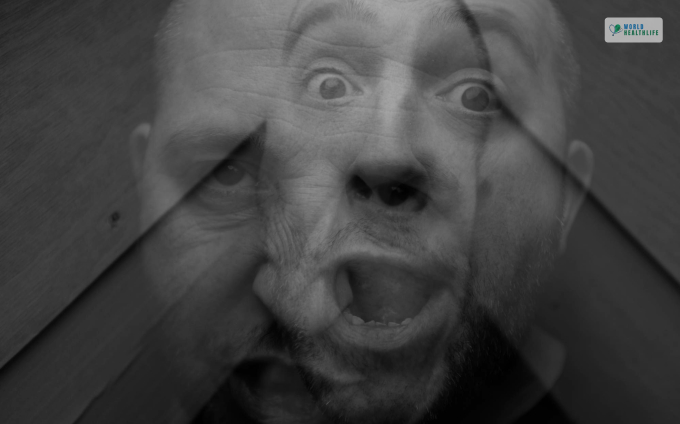Rapid cycling bipolar disorder is a condition characterized by multiple mood episodes in the previous year. The condition must occur at least 4 times in the past 12 months for it to be considered as rapid cycling bipolar disorder.
It is also seen that for you to receive a diagnosis of rapid cycling bipolar disorder.
This condition is also because of the pattern of frequency that follows. An individual experiencing four or more episodes of depression or mania in a year meets the criteria. The condition is not necessarily permanent as the frequency is not ‘stable.’
This article dives into the different aspects of the condition and how it can affect an individual. It also includes the different treatment options that are available, its diagnosis and possible causes.
Who Gets Rapid Cycling Bipolar Disorder?

As per the National Institute of Mental Health, nearly 5% of the adults in the US experience bipolar disorder at some point in time. This represents close to 5 per 100,000 of the populaces between 21-25 years’ experiencing it.
This is one health condition that does not discriminate between individuals regarding prevalence. Both men and women can experience the condition, belonging to nearly all races, ages, ethnicity and social classes.
Amongst them, the number of people who can experience rapid cycling patterns is 10% to 20%. Moreover, women who have bipolar II disorder are more likely to develop periods of rapid cycling.
More often, there are cases of people in their late teens or early 20s showing signs of bipolar disorder. There are different factors that influence an individual to develop the signs of rapid cycling and bipolar disorder.
These are known as risk factors that can influence an individual’s chances of developing a condition. Those for rapid cycling bipolar disorder are:
- Age: The age of an individual can determine if their bipolar disorder will follow a pattern. Those who develop bipolar disorder in their teens or late teens are more likely to experience rapid cycling.
- Sex: The sex of an individual can also become a risk factor for people. Women are more likely to experience rapid cycling in comparison to men. This disparity is due to the hormonal fluctuations that occur more in women than men.
- Type of bipolar disorder: Did you know there are different types of bipolar disorder. Yes! They influence the experience of rapid cycling. It is often noted in research and in clinical practice that people with bipolar II disorder are rapid cycl-ers.
The following section will investigate the features of bipolar disorder and its types.
Features of Bipolar Disorder

Bipolar disorder is also known as manic-depressive illness or just manic depression. It is a mental health issue that results in a shift in a person’s energy, mood and activity levels. This condition also has an impact on their concentration and focus, making it difficult to complete day-to-day tasks.
A characteristic of this condition is extreme mood swings, emotional highs or lows that can feel drastic to the people around them. They can also feel sad or hopeless during the lows, which can lead to displeasure and disinterest.
And then, when they are at emotional highs, or hypomania and mania, they can feel the exact opposite of the previous phase. They will show high energy, and euphoria or irritability. The mood swings can affect the energy, sleep, activity and behavior of the individual. They are also unable to think clearly or have control over their behavior.
A manic episode can include racing thoughts that you cannot control or ideas that quickly change while speaking. A person experiencing manic episode can face distractibility and restlessness that leads to a dissipation of energy in various areas.
They are more likely to work on several projects at once. They also exhibit impulsive behavior, indulging in risky behavior that gives them a channel to release high energy. They are more likely to engage in reckless driving, spending sprees and sexual promiscuity. This gives them a “high” that makes them feel “alive.”
Bipolar I disorder is characterized by manic episodes that can last for at least 7 days. That can become severe enough to require immediate medical care. On the other hand, depressive episodes can last between 2 weeks to several months that come in cycles.
Are Mania and Hypomania Different?

They are kind of different. In the aspect that hypomania is a milder version of mania that can last for shorter period of time. The duration can vary depending on the person. Mania is a more severe form that lasts for weeks or months.
These mainly show long-term symptoms which may be cut short with the help of treatment. Mania is due to high mental and physical energy levels in people with bipolar disorder. Hypomania can exhibit the same symptoms, but it is milder than mania.
The symptoms in hypomania are also not long or intense, which is how it can be differentiated from mania. Usually, people with bipolar II disorder exhibit hypomania. The symptoms differ in the activity levels which can also affect their behavior.
Identifying Rapid Cycling Bipolar Disorder

As per DSM-5 criteria, the following must be present in an individual for them to have a diagnosis of bipolar I disorder:
- A distinct period of persistent and abnormally elevated irritable mood and a persistent increase in goal-directed energy or activity.
- This can also be accompanied by an increase in unusual behavior like that showing an inflated self-esteem, decrease for sleep.
- They also exhibit more talkativeness or pressure to keep talking.
- They are also easy to distract, their attention can easily be drawn to unimportant external stimuli.
- Mood disturbance is sufficient to cause an impairment in social functioning, which can lead to hospitalization to prevent self-harm.
The diagnostic criteria for bipolar II disorder include the following:
- Persistent period of abnormal or expansive and irritable mood that lasts for at least 4 consecutive days. It is also present for a major part of the day, every day.
- During mood disturbance there is an increase in energy and activity and a noticeable change in their behavior.
- The change in functioning is very evident for others, including the mood disturbance.
- This episode is not severe enough to require hospitalization, unless there is a psychotic episode. This will imply that the episode is manic.
- The episode is hypomanic if the symptoms persist even after the physiological effects of the treatment.
How Can I Differentiate Rapid Cycling from Other Courses of Illness

Rapid cycling is not a condition that occurs like other illnesses. It is the frequency at which the episodes alternate which is different. It has the same symptoms as bipolar disorder. Thus, there is no difference in identifying it from other courses of illness.
You can identify rapid cycling bipolar disorder from other illnesses through the pattern of its occurrence. There must be 4 mood episodes that have occurred in the past 12 months.
The challenges that can occur with the identification of rapid cycling include:
- Careful mapping of the episodes for at least one year
- Unreliable results based on a single mood episode
- The frequency can differ depending on the person. Some people experience episodes multiple times in a single day, some experience it every day for weeks on end.
- This makes it difficult for the development of a proper identification strategy for rapid cycling that is uniform.
- Medication has a negative impact on rapid cycling which can throw its identification in individuals who are experiencing its symptoms.
Treatment for Rapid Cycling Bipolar Disorder

As seen through evidence, rapid cycling can get worse with medication, this can lead to poorer quality of life. However, it can also have positive effects, it just differs from person to person due to the various factors that influence the pathophysiology of a condition.
The usual treatment options include the following:
- Mood-stabilizing drugs such as lamotrigine, carbamazepine, valproate and lithium.
- Combination of mood stabilizers as single drug may not be effective
- Psychosocial therapy
- Combination of medications and therapy such as atypical antipsychotics, divalproex, lithium
- Self-management strategies, psychoeducation along with psychotherapy and medications
All of these have been shown to have positive effects on an individual with some cases even showing drastic change in the symptoms. Psychotherapy approaches also seem to be helpful in these cases.
Risks and Complications

There are several risks of the condition and there can be complications that are quite severe. The following is a list of everything that occurs during a diagnosis of rapid cycling bipolar disorder:
- Poor quality of life can have different repercussions such as rapid change in weight. This can further impact the mental wellbeing of the individual.
- Poor diagnostic information can lead to prolonged rapid cycling, without proper treatment. This can also result in suicidal risk which increases.
Strategies to avoid complications of rapid cycling bipolar disorder include:
- Avoiding reckless habits such as alcohol consumption or drugs.
- Adhering to the treatment plan
- Regularly checking in with your friends and family when you feel like giving in to the urge of doing something reckless
- Keep your life in check by maintaining daily routines
- Share your symptoms with your physician when they get severe
Conclusion
Rapid cycling bipolar disorder can become severe to handle if you do not keep a close eye on the signs. This pattern of bipolar disorder can almost be missed by your physician if you do not remain clear on your experience.
It is very important to remain very clear on how you are feeling during your episodes and how frequently you or your family/friends are noticing the changes.
This helps in early control of the condition, thus preventing complications. Reach out to your doctor if you are experiencing any of the symptoms.
Read Also:
- Premenstrual Exacerbation: Everything You Need To Know About It.
- Understanding And Navigating the Complexities of Bipolar Disorder Diagnosis
- Decoding the BPD Test: Exploring the Symptoms, Causes, and Treatment Options









